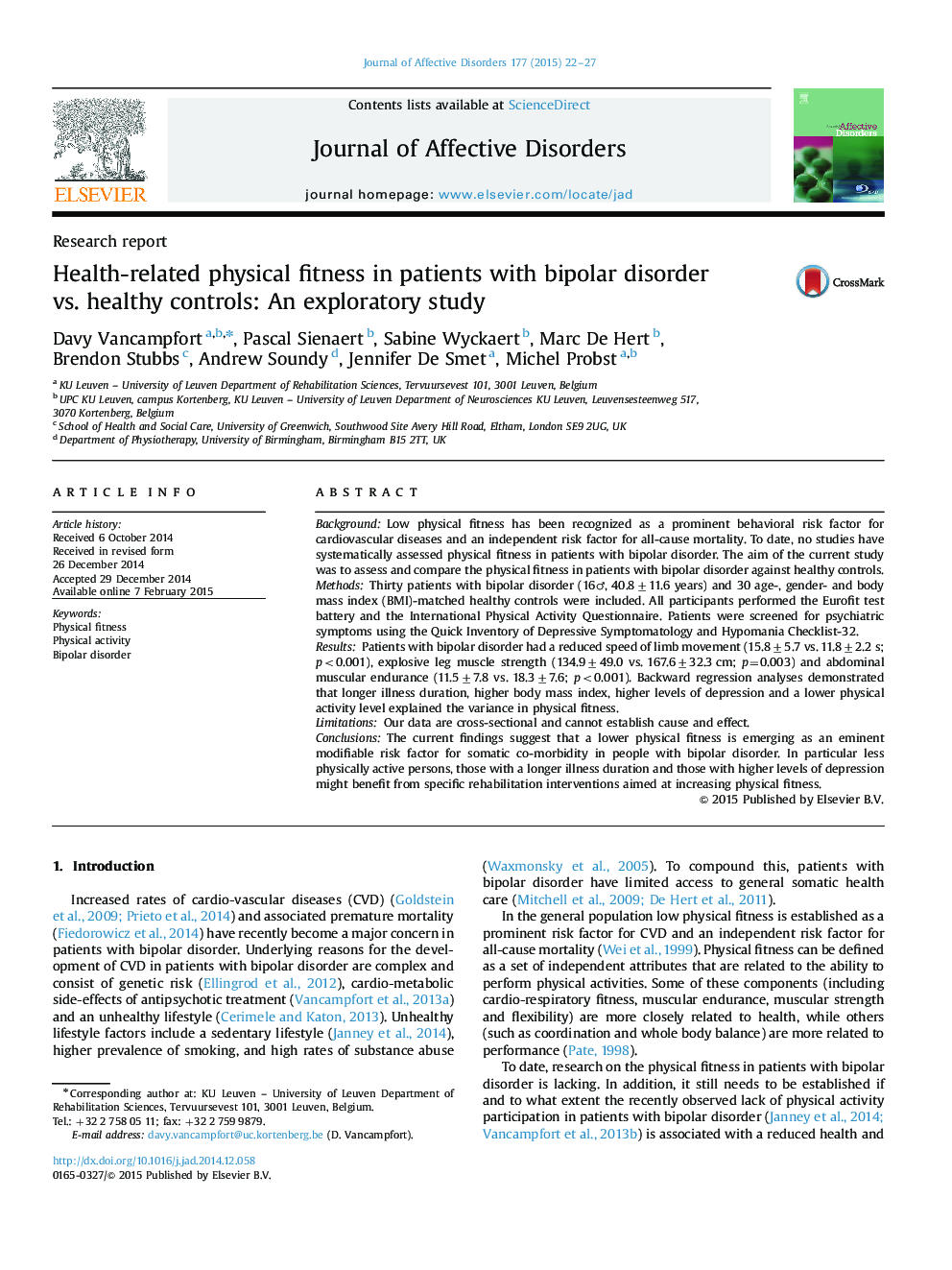| Article ID | Journal | Published Year | Pages | File Type |
|---|---|---|---|---|
| 4185901 | Journal of Affective Disorders | 2015 | 6 Pages |
BackgroundLow physical fitness has been recognized as a prominent behavioral risk factor for cardiovascular diseases and an independent risk factor for all-cause mortality. To date, no studies have systematically assessed physical fitness in patients with bipolar disorder. The aim of the current study was to assess and compare the physical fitness in patients with bipolar disorder against healthy controls.MethodsThirty patients with bipolar disorder (16♂, 40.8±11.6 years) and 30 age-, gender- and body mass index (BMI)-matched healthy controls were included. All participants performed the Eurofit test battery and the International Physical Activity Questionnaire. Patients were screened for psychiatric symptoms using the Quick Inventory of Depressive Symptomatology and Hypomania Checklist-32.ResultsPatients with bipolar disorder had a reduced speed of limb movement (15.8±5.7 vs. 11.8±2.2 s; p<0.001), explosive leg muscle strength (134.9±49.0 vs. 167.6±32.3 cm; p=0.003) and abdominal muscular endurance (11.5±7.8 vs. 18.3±7.6; p<0.001). Backward regression analyses demonstrated that longer illness duration, higher body mass index, higher levels of depression and a lower physical activity level explained the variance in physical fitness.LimitationsOur data are cross-sectional and cannot establish cause and effect.ConclusionsThe current findings suggest that a lower physical fitness is emerging as an eminent modifiable risk factor for somatic co-morbidity in people with bipolar disorder. In particular less physically active persons, those with a longer illness duration and those with higher levels of depression might benefit from specific rehabilitation interventions aimed at increasing physical fitness.
